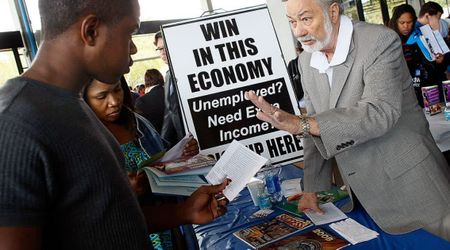‘The Great Resignation’ Slowed Down Last Year; Will the Trend Continue in 2024?

While many workers continue to leave their jobs across sectors, trucking, and personal care see high quit rates due to higher pay. These businesses offer more money to attract workers. By contrast, fewer now quit retail and professional services jobs. The reasons? A cooling job market, economic uncertainty, and slowing income gains. Although the general trend of job resignations has decreased, experts such as Justin Begley of Moody's Analytics and Julia Pollak, chief economist at ZipRecruiter, believe that this tendency varies between industries. Industries with in-person roles, facing worker shortages since the pandemic, are experiencing more job turnover.

What is "The Great Resignation"?
In 2021, the phrase "The Great Resignation" emerged, describing a surge in U.S. workers quitting jobs starting in spring. Texas A&M professor, Anthony Klotz coined the term, linking it to workers delaying decisions during the pandemic onset. COVID-19's introduction prompted many to postpone choices for varied reasons. Consequently, voluntary job separations dropped from 2.3% in February 2020 to 1.6% two months later.
But between April 2020 and March 2022, there was a shift in the pattern with 3% of workers quitting their positions, according to the U.S. Bureau of Labor Statistics (BLS) Job Openings and Labor Turnover Survey (JOLTS). This decline largely reflected reduced hiring for new positions and individuals delaying their exits whether due to economic uncertainty or other reasons. Some felt finally at ease to go once COVID-19 vaccinations became available and the economy started to improve. This led to an increase in hiring. This increase in quitting rates may have been caused by several pandemic-related variables such as workers reevaluating their priorities, employers demanding office returns, mistreatment during the epidemic, delayed labor force recovery, childcare issues, and vaccine requirements.
According to a February 2022 Pew Research Center survey, a lot of employees listed low income and few opportunities for growth as their main reasons for leaving, suggesting that they were looking for better opportunities elsewhere.

Dynamics of "The Great Resignation" and its aftermath
Many people left their jobs in the spring of 2022 with 4.5 million quitting monthly. This was 3% of workers. Why? The pandemic caused labor shortages. Companies raised pay and benefits to keep staff. But it made workers seek better chances elsewhere too. So quits spiked. Now the health crisis has eased and resignations have slowed down. In January, 2.1% quit, which is equal to 3.4 million people. Still high but lower than before the pandemic.
What is the reason for this decline? Not only was the labor market generally more favorable, but during the Great Resignation, a lot of people had already changed careers to better fit their interests, abilities, and pay preferences. According to Justin Begley, "They have no reason to put themselves back on the market."

The Big Stay
Americans are leaving their jobs less frequently in 2023 and this trend is predicted to persist in 2024. Many workers are opting to keep their current jobs due to concerns about a potential economic downturn and widespread layoffs. This shift marks the beginning of a new phase known as "The Big Stay." According to the ADP Research Institute, the number of Americans quitting their jobs decreased by 5% in the first quarter of 2023 compared to the final quarter of 2022. This slowdown is particularly noticeable in the context of the higher quit rates seen in 2022.























